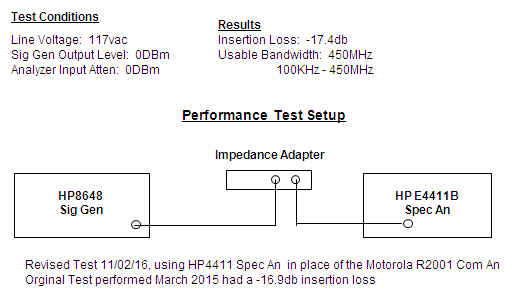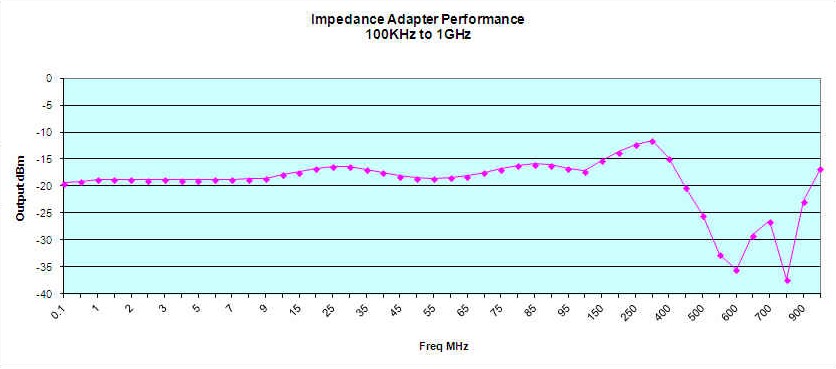Impedance Adapter
| I
built the Impedance Adapter in early 2015. I really love using a
Spectrum Analyzer to look at signals in the RF path of a circuit, there
is so much more information about the signal and what's going on in the
circuit with a spectrum analyzer. The problem is Spectrum Analyzers all
have a 50 ohm input impedance which would severely load the circuit when
sticking a probe in there. I needed something that had a high impedance
input so as not to load the circuit being tested and provide a 50 ohm
impedance output for connection to the spectrum analyzer. I decided to
use a tube as tubes have very high input impedance and if I used a
cathode follower circuit I could get the low output impedance of 50 ohms
I desired. I used Grayson Evans KJ7UM book Hollow-State Design as a
guide to designing the tube circuit. This is an excellent reference for
designing tube circuits, I highly recommend the book. Design |
|
Performance |
|
 |
 |
| Performance was pretty good. I plotted frequency against output level from 100KHz to 1GHz. I determined that usable frequency was from 100KHz to 450MHz. I do attribute the usability to 450MHz to the acorn tube I used. It does have an average insertion loss of -17db. Here's the full Excel data sheet if you want the full raw data. | |
|
|
|